The following charts summarize various data that are useful when comparing formats, either film or digital. (Not all possible comparisons are shown.) Some additional background regarding some of the traditional film formats known as “medium format” is found at the end of this post.
Basic Formats Data
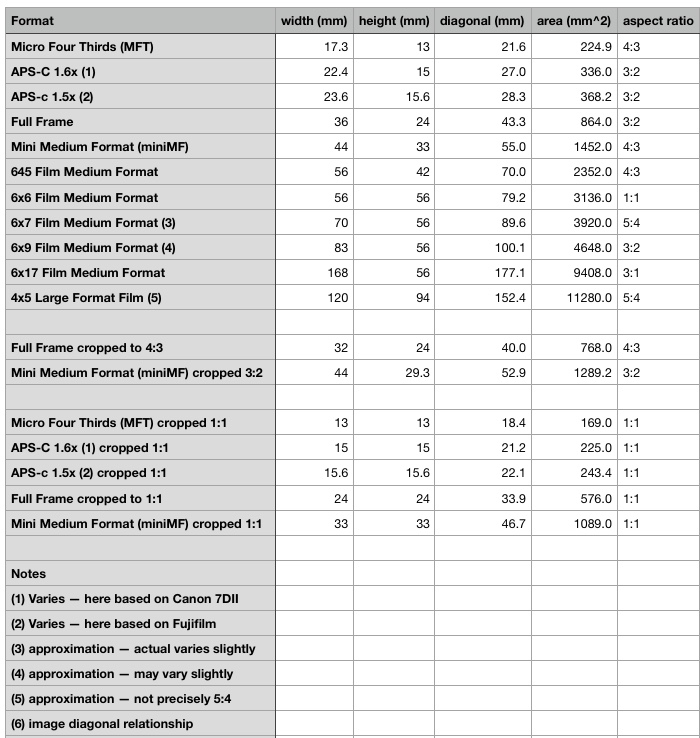
Comparisons Normalized to Full Frame Format
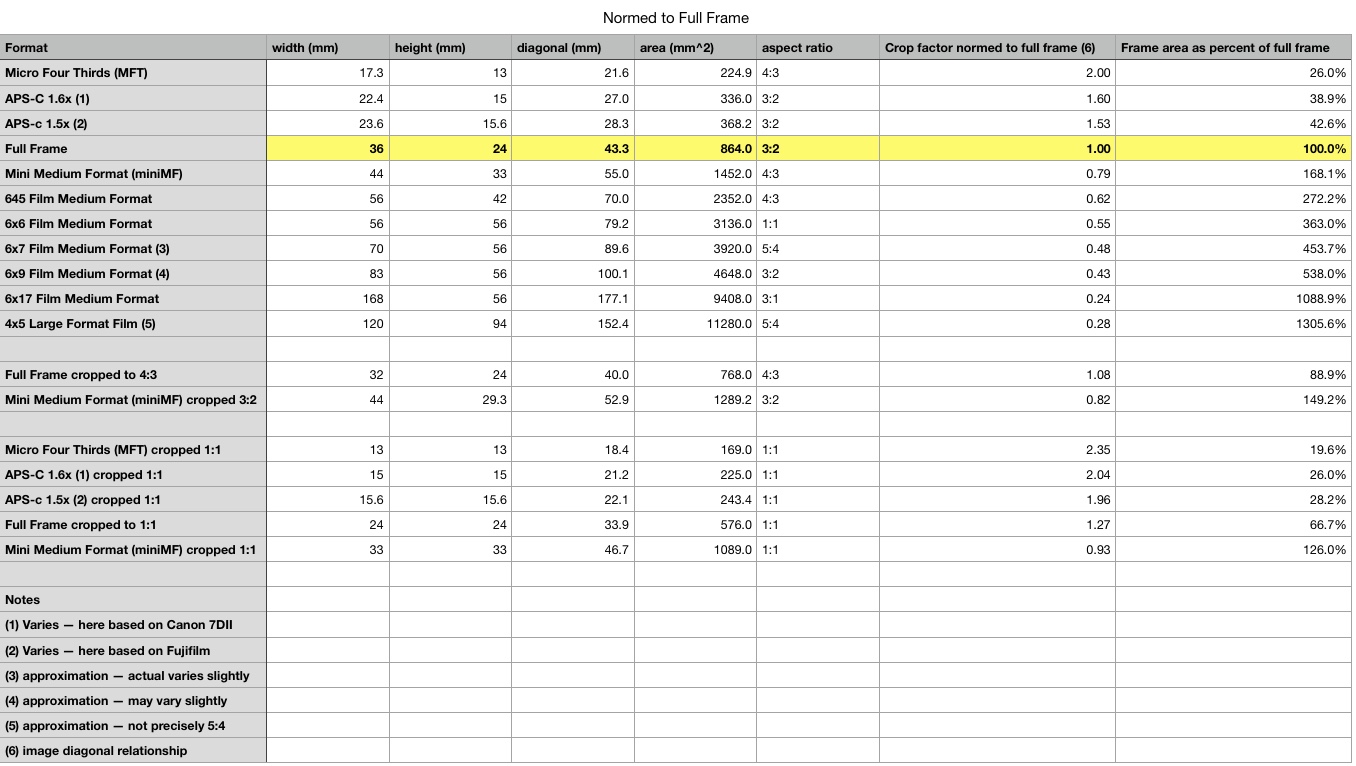
Comparisons Normalized to miniMF 33×44 Format
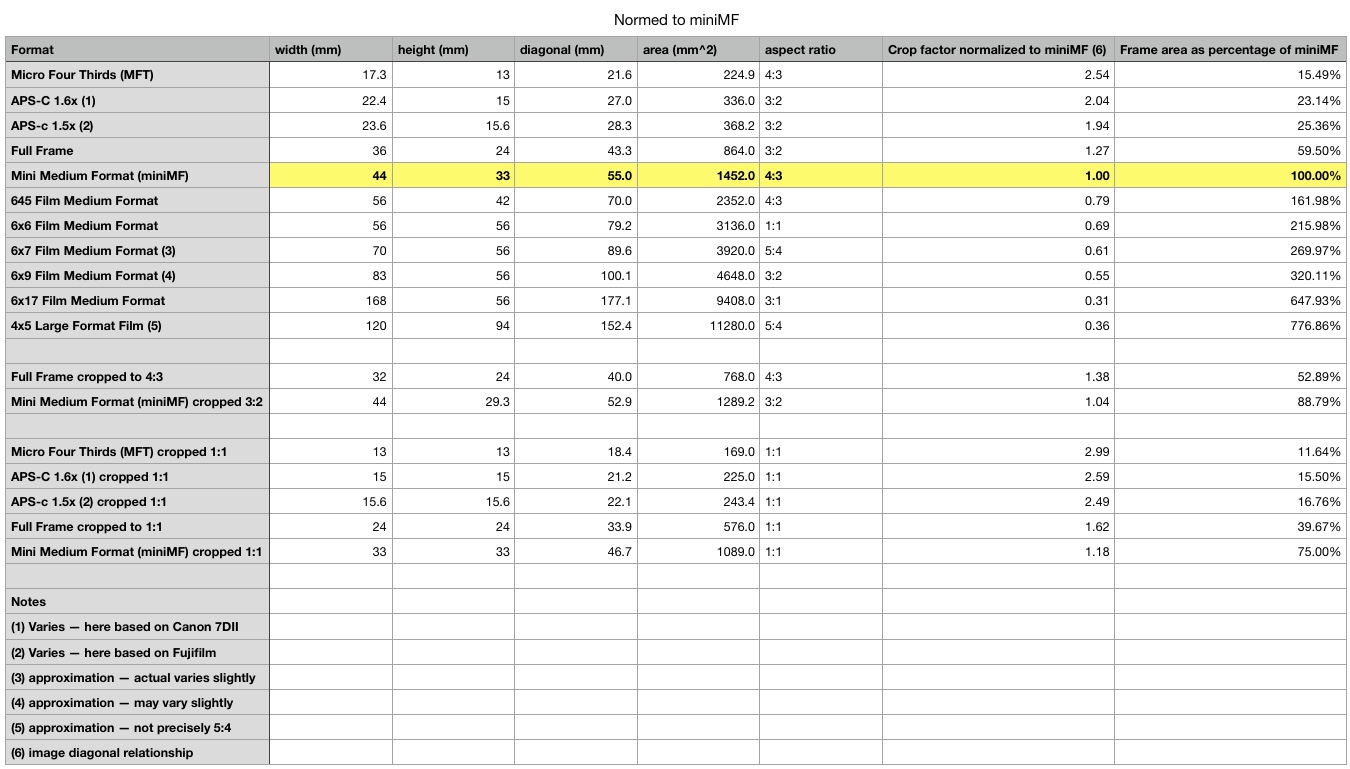
Comparisons Normalized to 645 Medium Format Film
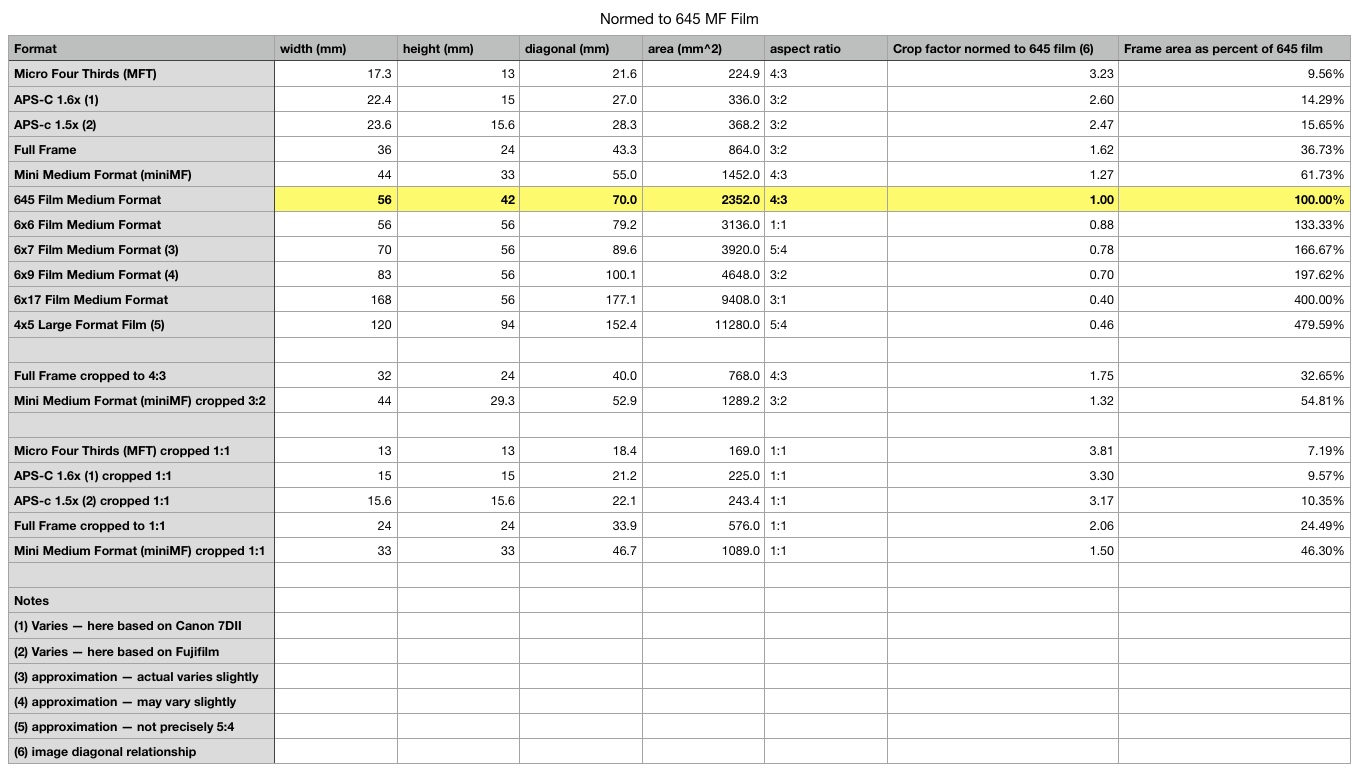
Comparisons Normalized to Full Frame at 4:3 Crop
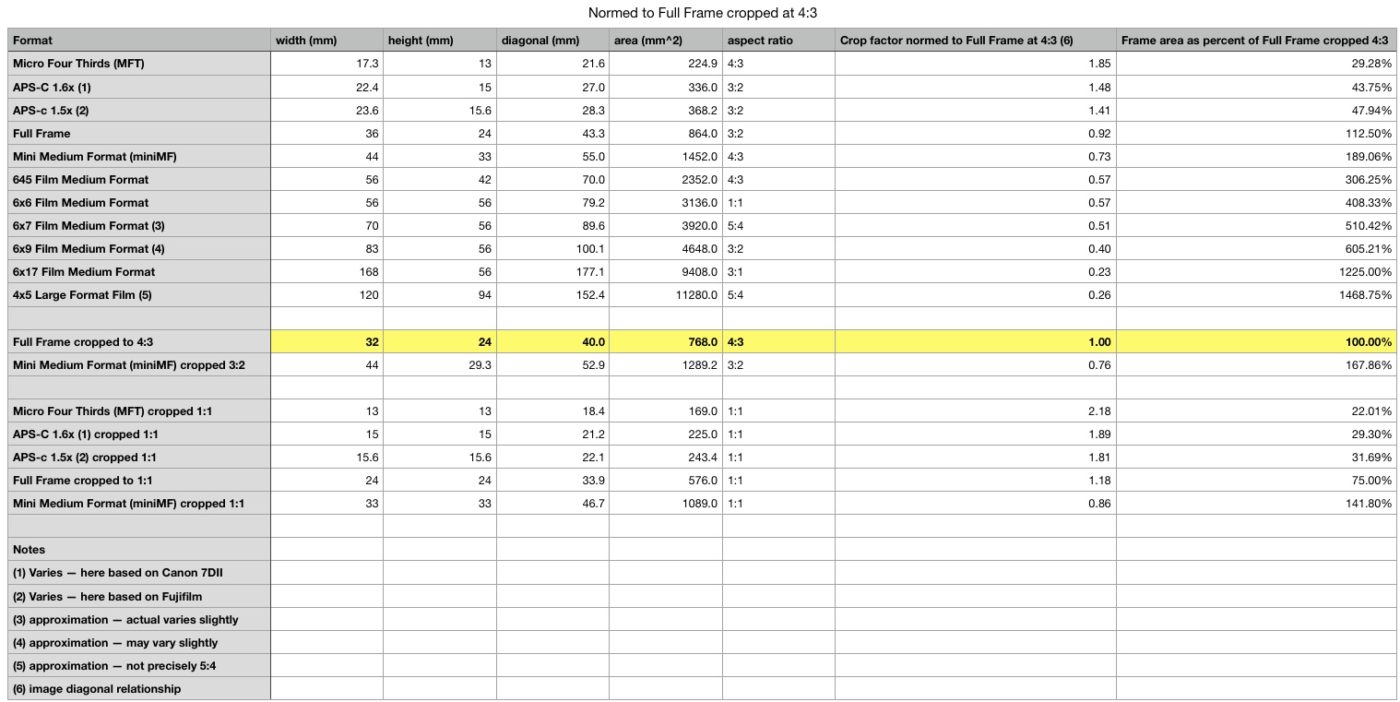
Comparisons of Square Formats Normalized to 6×6 Medium Format Film

Comparions Normalized to 6×17 “Panoramic” Medium Format Film

Visual Comparison
The following illustration shows the relative sizes of some common digital and film formats. (Not all variations are shown.) The leftmost group includes common digital formats. The next group — indicated in yellow — includes common traditional formats collectively known as “medium format” film. At the far right is 4×5 “large format” film.

Notes on this illustration:
- 645 film is shown in both the “landscape” and “portrait” orientations in order to make clear that it shares the 56mm dimension with the other types of medium format film. (The portrait version is partially hidden the landscape version.)
- There are multiple variations on “large format film.” Shown here is the most common 4″ x 5″ size, the smallest of the large format film formats typically still in use.
About Medium Format Film
While those of us who have “done photography” for a long time are familiar with the traditional “medium formats,” those without that perspective may be less (or not at all) familiar with the meaning of the term. Medium format” traditionally (for many decades) referred to film formats using (primarily) 120/220 film with a 6cm (60mm) physical width. While details of these formats are included in the tables above, here is a brief contextual overview:
- 645 format (1) is the smallest of the traditional common film medium formats. It is named based on “6cm x 4.5cm.” In actual use the frame size is slightly smaller than the 6cm film width at about 56mm. (This is typical of film medium formats — the “6” always refers to the physical film width, not the smaller actual image size.)
- 6×6 format produces a square image of approximately 56mm x 56mm, and is the next larger film medium format above 645.
- 6×7 format uses the 56mm width-determined dimension for its shorter side, and thus has a larger area than 6×6. (It approximately replicates the 5:4 aspect ratio of LF film.)
- 6×9 format also keeps the 56mm dimension its shorter side, but expands the longer dimension to produce a 3:2 aspect ratio – like 35mm film and full frame digital.
- 6×17 format (also known as “panoramic format”) is the largest common medium format. It also uses the 56mm dimension for its short side but greatly extends the long dimension to produce a 3:1 aspect ratio.
(1) While Pentax names its miniMF digital cameras using the “645” term, they do not use 645 format sensors. They use 33mm x 44mm sensors, just like Fujifilm, Hasselblad, and others. Additional note: On a few occasions, Fujifilm has referred to 33mm x 44mm format as “super full frame.”
(For comparison purposes, note that the dimension that is 56mm on 645 film format is 44mm on miniMF. When comparing to the other medium formats, the analogous comparison is between 56mm and 33mm.)
G Dan Mitchell is a California photographer and visual opportunist. His book, “California’s Fall Color: A Photographer’s Guide to Autumn in the Sierra” is available from Heyday Books and Amazon.
Blog | About | Flickr | Facebook | Email
Links to Articles, Sales and Licensing, my Sierra Nevada Fall Color book, Contact Information.
All media © Copyright G Dan Mitchell and others as indicated. Any use requires advance permission from G Dan Mitchell.
